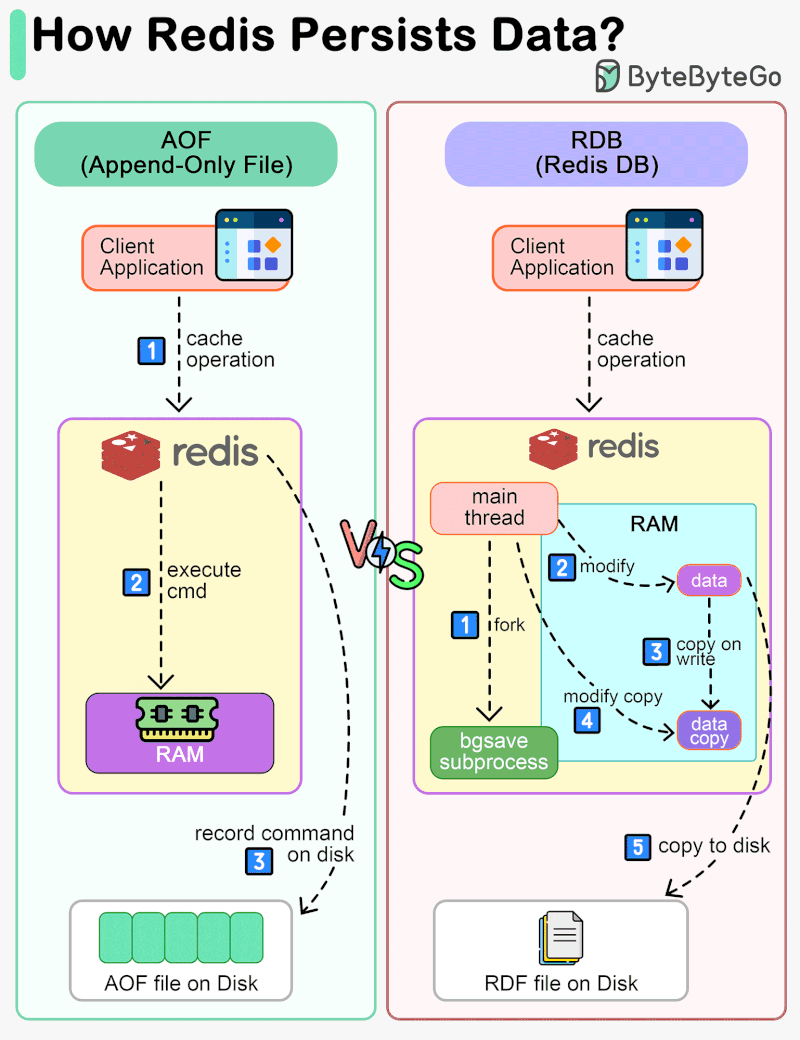
Hey tech fans! Ready for a thrilling adventure into the heart of data management? Hold onto your hats because we're about to uncover the secret behind the super-fast performance of your favorite apps. 🚀
Imagine this: You're using your favorite app, and everything just works seamlessly, almost like magic. Ever wonder how it does that? What's the trick behind its lightning speed? Enter Redis – the behind-the-scenes hero of data storage and speed. ✨
Redis: The Mystery Solver of Data Speed
Redis, short for Remote Dictionary Server, is no ordinary tool – it's a champion of handling data quickly! 🏆 But it's not just a fancy name; it's a powerful way to store and use data that makes everything super speedy.
At its core, Redis does something really clever: it stores data in the computer's memory, making it lightning-fast to access. 💨 Think of it like having a super-fast memory that remembers everything instantly, without any delays.
How Does Redis Work Its Magic?
In-Memory Storage: Redis keeps all its data in RAM, which makes it super-fast for getting information. This is really helpful when you need to access data quickly.
Different Kinds of Data: Redis supports lots of different types of data structures, like strings, lists, and sets. 🧱 Each type is good for different things, so developers can choose what works best for their needs.
Saving Data: Even though Redis stores data in memory, it still offers ways to make sure your data stays safe. You can set it up to save your data to disk regularly or keep a log of every command. This makes sure your data is safe even if something goes wrong.
Messaging: Redis can also be used to send messages between different parts of an app. 📣 This means one part of an app can tell another part to do something without waiting for a response, which is really handy for real-time updates.
Growing with You: If you need to handle lots of data or suddenly get a lot of users, Redis can handle it! It can spread your data out across lots of different computers, so everything keeps running smoothly. 🌐
Practical Uses of Redis
Caching: Redis is great for caching, which means it stores information that's used a lot so it can be accessed quickly. This makes apps run faster because they don't have to keep getting the same data from a slower database.
Managing Sessions: If you've ever stayed logged in to a website, Redis might be behind the scenes managing your session. It keeps track of who you are and what you're doing so the website can remember you.
Real-Time Data Analysis: With Redis, you can analyze data in real-time, which means you can see what's happening right now as it's happening. This is really useful for things like monitoring website traffic or tracking user behavior.
Keeping Scores: Games and social media often use Redis to keep track of scores or rankings. It's really good at quickly updating this kind of information so everyone sees the latest scores.

Challenges
While Redis undoubtedly offers a sweet taste of data management, it's essential to be aware of its sour notes too. Let's take a closer look at the potential challenges, or "corns," of using Redis:
Memory Limits: Redis's reliance on memory means there's a cap on how much data it can handle. Once you hit that limit, it's like hitting a wall – you can't squeeze in any more!
Persistence Puzzles: Ensuring data durability in Redis requires careful setup and configuration. Without proper persistence measures, there's a risk of data loss if things go awry.
Single-Threaded Struggles: Redis operates as a single-threaded application, which can lead to performance bottlenecks under heavy loads. It's like trying to juggle too many tasks at once – things can get a bit tangled!
Query Quandaries: Complex querying capabilities are limited in Redis. It's like searching for a needle in a haystack – sometimes, you need more advanced tools to find what you're looking for.
High Availability Hurdles: Achieving high availability in Redis requires additional setup and maintenance. It's like building a sturdy fortress – it takes time and effort to ensure it stands strong.
Cost Concerns: While Redis itself is free, scaling up and managing Redis clusters can incur costs. It's like adding toppings to your favorite treat – those extras can add up!
Security Snags: Securing Redis installations requires attention to detail. It's like locking the doors of your house – you need to make sure everything is secure to keep intruders out.
Data Eviction Dilemmas: When Redis runs out of memory, it resorts to data eviction policies to make room for new data. Choosing the right eviction strategy can be challenging and may affect performance.
Toolbox Limitations: While Redis offers various features, it may not cover all your needs. It's like trying to build a house with just a hammer – sometimes, you need more tools in your toolbox!
Support Scarcity: Finding help with Redis-related issues may not always be easy. It's like searching for a rare treasure – you might need to do some digging to find the answers you seek.
Wrapping Up
And that's Redis in a nutshell! 🚀 It might seem simple, but it's an essential tool for keeping apps running smoothly and quickly. Whether you're building a website, a messaging app, or a game, Redis can help you manage your data in the blink of an eye. So, next time you need to speed things up, give Redis a try – it's your trusty sidekick for lightning-fast data management!